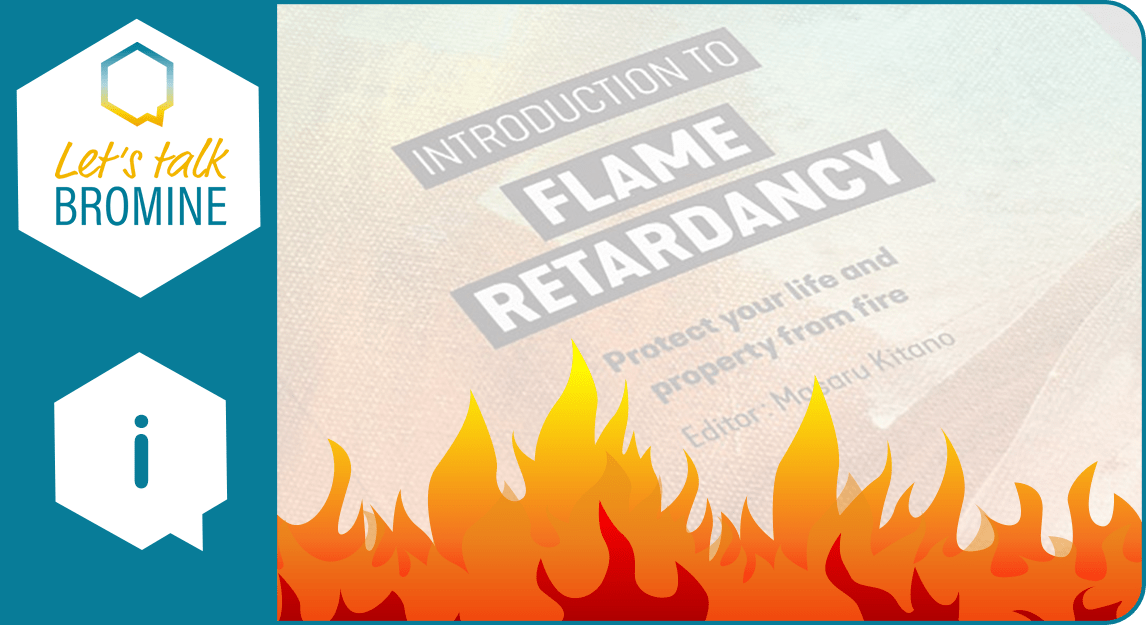
15 Mar An overview of flame retardancy
In our article about the book “Introduction to flame retardancy” we highlighted the co-operation between Professor Masaru Kitano and BSEF in producing an English version of his book the book “Introduction to flame retardancy – Protect your life and property from fire”
This time we want to go deeper into flame retardancy science as the solution to minimize the human and economic damage caused by fires.
What are flame retardants?
Flame retardants are a key component in increasing survival chances during a fire event as they allow longer escape times as well as longer response time for fire responders. They can prevent fires from starting, limit the spread of fire and minimize fire damage.
Some flame retardants work effectively on their own; others act as “synergists” to increase the fire protective benefits of other flame retardants.
Flame retardants are added to or incorporated into different materials or they are applied as a treatment to materials such as textiles and plastics.
They are the hidden protection against the potentially devastating impact of fire in so many products that we take for granted.
Where are flame retardants used?
Flame retardants are used in four major areas to comply with fire safety requirements
- Transportation
Overhead compartments, seat covers and fillings, roof liners, textile carpets, curtains, sidewall and ceiling panels, electrical and electronic equipment, car bumpers,… - Electronics and electrical devices
Televisions, computers, laptops, cell phones, refrigerators, washers, dryers, battery chargers,… - Furnishings
Natural and synthetic filling materials and textile fibers, foam upholstery, curtains and fabric blinds, carpets,… - Building and construction materials
Electrical wires and cables, insulation materials, paints and coatings, roofing components , composite panels,…
Regulation of flame retardants
As with all chemicals, flame retardants are regulated and their uses in products and materials are in accordance with chemical safety assessments.
World-wide there is substantial legislation in force regulating chemicals, for instance the EU’s REACH Regulation and the US Toxic Substances Control Act. These comprehensive laws ensure that chemicals, including flame retardants, are regulated in a way that protects human health and the environment.
Brominated flame retardants (BFR’s)
Bromine is commonly used in flame retardants due to its high atomic mass and its general versatility across a wide range of applications and polymers.
There are more than 70 different types of brominated flame retardants with different properties (reactive, polymeric, halogenated…). Depending on the composition, nature and application of the materials or products that need to be rendered fire-safe, the correct type of flame retardants can be used.
End of life considerations
Brominated Flame retardants contribute to the fire safety of electrical and electronic equipment and installations where printed circuit boards are used, such as consumer electronics (TVs, vacuum cleaners, washing machines), office and communication equipment (copiers, computers, printers, fax machines, radios, etc), automotive, aviation and all entertainment equipment.
At the end of a product or materials life, it is important to ensure as far as possible that the materials are reused or recycled. Printed circuit boards are for example recycled for the metals they contain.
Products or materials containing BFR’s are fully compatible with today’s integrated waste management optionsincluding mechanical recycling, chemical recycling, thermal processing/depolymerization/gasification all of which enable the recovery of valuable materials or energy.
What are your thoughts on flame retardants and how they save lives and properties?
Do not hesitate to share this article, to give your opinion and to start the conversation.
SOURCES
https://flameretardants.americanchemistry.com/Flame-Retardant-Basics/
Introduction to flame retardancy – Protect your life and property from fire, Masaru Kitano




No Comments